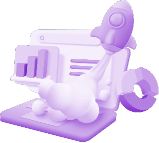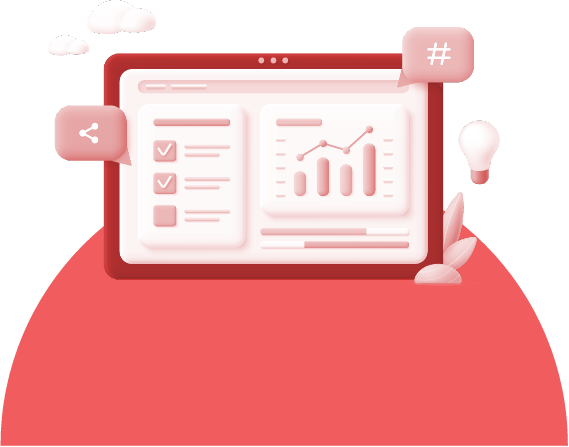Amazon PPC Ads
Amazon PPC (Pay-Per-Click) is an advertising model used by Amazon to promote products on its platform. Like all pay-per-click ads, it allows sellers to bid for ad placements on sections of Amazon, and only pay when their ad is clicked by a potential customer.
What Is Amazon PPC Ads?
Amazon PPC lets businesses advertise their products directly within the Amazon marketplace. You can create targeted ads featuring your products and compete for keywords shoppers use to find similar items. Each time a customer clicks on your ad, you pay a fee to Amazon – that’s where the “pay-per-click” part comes in.
How does Amazon PPC Ads work?
To better understand how Amazon PPC works, below is a breakdown of the processes from start to finish:
- Keyword Targeting: Advertisers start by selecting relevant keywords that potential customers might use to search for products on Amazon. These could be product names, descriptions, categories, or even broader terms that are related to their products.
- Ad Auction: Next, Amazon runs an ad auction when a customer searches on Amazon using one of the targeted keywords. This is where all the advertisers would bid on that keyword to determine their Ad Ranking.
- Ad Ranking: Amazon’s Ad Ranking algorithm determines the order in which sponsored product ads are displayed on the search results page. The ranking takes into account the advertiser’s bid amount, product relevance to what was searched, and its overall performance metrics.
- Ad Display: The top-ranked paid product advertisement will be prominently featured on both the top and bottom sections of the Amazon search results page, as well as on product detail pages.
- Cost-Per-Click(CPC): Advertisers will only be charged a fee (this is usually the amount they bid), every time a customer clicks on their sponsored product ad. The actual CPC may change depending on the ad auction competition for that specific keyword.
- Campaign Management: Advertisers can oversee their Amazon PPC campaigns using the Amazon Advertising console. This platform allows them to change their bids, set budgets, choose keywords, and track campaign performance metrics, such as impressions, clicks, conversions, and advertising expenditures.
Popular Types Of Amazon PPC Ads
The choice of ad type depends on your business goals. What does your business hope to achieve? Do you wish to increase brand awareness, for example? Or do you just want to drive traffic to specific product listings, or reach potential customers beyond Amazon’s platform? Below are 3 popular Amazon PPC Ad types:

Sponsored Brand Ads
Brand ads can help to increase awareness and come in the form of display ads that feature the brand logo, a custom headline, and multiple product thumbnails. They usually appear at the top of search results and are great for driving traffic to your Amazon Store or product listings.

Sponsored Product Ads
The case is not the same for Sponsored Product ads because they are more keyword-targeted ads that promote individual product listings. Unlike Brand Ads, Product Ads are featured in search results and product detail pages. Their focus is more on improving product visibility and sales for specific products.

Sponsored Display Ads
Lastly, Sponsored Display Ads are ads that are shown to shoppers based on their interests and browsing behavior. The purpose of this ad is to allow businesses to reach other potential customers across the web. Hence, the ads lean more toward product display ads that appear on desktop and mobile websites outside of Amazon.
How to Create and Optimize Sponsored Products Amazon PPC Ads
Here are the key steps to create and optimize Sponsored Products PPC ads on Amazon:

Step 1
Keyword Research
To start, businesses need to use tools like Helium 10 to find relevant keywords with high search volume. The next step is to analyze auto campaigns and competitor keywords before grouping keywords into tight ad groups/campaigns for better relevancy.

Step 2
Campaign Structure
Separate campaigns need to be created for brand vs. non-brand keywords, and manual vs auto campaigns. Next is to select a keyword-targeted campaign structure by creating an ad group for each product/keyword theme. Then, set prudent default bids to start, and this usually starts at a lower price.

Step 3
Optimizing Targeting
The next step is to refine your keyword match types to broad, phrase, or exact match based on performance. Be sure to add negative keywords to prevent your ads from showing for irrelevant searches. Then experiment with product targeting and category targeting to see what works.

Step 4
Optimizing Bids
Using a flexible bid automation rule that adjusts bids regularly based on your target ACoS/ROAS is best. This way, businesses can increase bids on top-converting keywords/products and lower bids on underperformers.

Step 5
Ad Creative Optimization
Businesses should also experiment with different titles, bullets, and descriptions to see what works. Wherever possible, use eye-catching visuals and video ads, making sure to highlight top product features and benefits to increase engagement.

Step 6
Analytics and Reporting
It would be prudent to track key metrics like ACOS, ROAS, CTR, and CPC and to use search term reports and premium tools to identify your top-spend search queries. For efficient campaign monitoring, businesses can also set up automated reports and dashboards.

Step 7
Constant Testing and Iteration
It is important to remember that PPC management is a repetitive process of testing, analyzing, and optimizing. This means pausing underperforming campaigns or ad groups and modifying them, as well as continuously expanding campaigns by adding new keywords and products.
How to create and Optimize automatic targeting of Sponsored Products ads
A great way to start is to begin with automatic campaigns to gather data. Along the way, you can fine-tune and expand with manual targeting and campaign improvements for better control and results.

Step 1
Create an Auto Campaign with a smaller daily budget by adding your products

Step 2
Let the auto campaign run for 2-4 weeks to gather data

Step 3
Analyze search term reports to identify top and poor performers

Step 4
Add irrelevant searches as negative keywords at the campaign level

Step 5
For top converters, create new manual campaigns targeting those exact searches or product targets

Step 6
Gradually move winners from auto to optimized manual campaigns

Step 7
Continuously mine results from the auto campaign for negative keywords to block

Step 8
Recreate positive signals in refined, granular manual campaigns

Step 9
Slowly increase your budget and bids as you find more profitable targeting

Step 10
Repeat the entire cycle

How Much Does Amazon PPC Ads Cost?
Amazon PPC advertising costs can fluctuate considerably based on several variables like the product category, bidding prices, and ad types used. Businesses also need to consider their Target Advertising Cost of Sale (ACoS) which is typically 20-30% for most products.
Also, the more competitive the category, the higher the costs-per-click (CPCs). Popular keywords also require higher bids and businesses may need to bid quite high to increase their chances of ranking.
Although businesses have daily budget caps to help them control their daily ad spend, how fast they spend also depends on the type of ad they choose to use. Product Ads are usually the cheapest, followed by Brand Ads, which cost slightly more, and Display Ads are the most expensive.
Bearing in mind that businesses need to be cost-efficient to ensure that their advertising spend is aligned with their return on investment because managing ACoS and optimizing campaigns is crucial for profitability
Why Should Your Business Hire an Amazon PPC Ads Agency?
There are several reasons why businesses should consider hiring an Amazon PCC Agency. First of all, PPC agencies specialize exclusively in Amazon advertising therefore, they are the ones with the know-how and are up-to-date on all the latest strategies, policies, and best practices.
In addition to that, they have years of experience running successful ad campaigns across diverse product categories compared to in-house staff who may lack the knowledge and practice. It would be wise to get the experts to handle all aspects of campaign setup, management, optimization, and reporting so that your staff can focus on other core business operations.
Top PPC agencies would also invest in premium PPC tools like Helium 10, Sellics, Perpetua, and big data insights for advanced optimization. They can also identify areas for improvement and have the experience to scale businesses for future growth to meet increasing demands.

Top 3 Amazon PPC Ads Courses
Below are our top 3 recommendations for Amazon PPC courses that are highly rated and are taught by experts in Amazon PPC advertising.
The courses are comprehensive and cover campaign setup, management, optimization strategies, and mastering the tools needed to run profitable ad campaigns on Amazon.

Amazing Seller Academy’s Amazon Ads Course by Marketplace Seller Course
- Comprehensive course covering sponsored product ads, sponsored brand ads, and more
- Taught by successful Amazon sellers
- Includes over 8 hours of video training and downloadable resources
Marketplace SuperHeroes PPC Course
- Covers PPC fundamentals, campaign structure, and optimization strategies
- Taught by an Amazon advertising specialist
- Includes coaching calls and access to a private Facebook group


Helium 10’s Freestyle Amazon Ad Course
- Covers the Helium 10 suite of PPC tools
- Teaches campaign building, keyword research, optimization
- Includes over 5 hours of videos and downloadable resources
Schedule An Amazon PPC Ads Consultation With Highground.asia To Get More Amazon PPC Services!
Schedule a consultation with us today to discuss how our experts can optimize your Amazon Sponsored Ads Campaigns for increased sales and better Return on Ad Spend (ROAS)!


